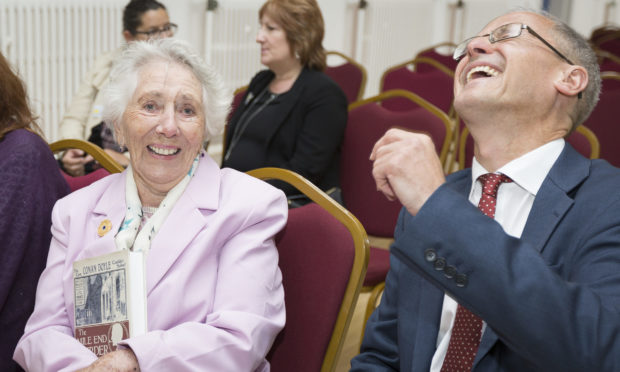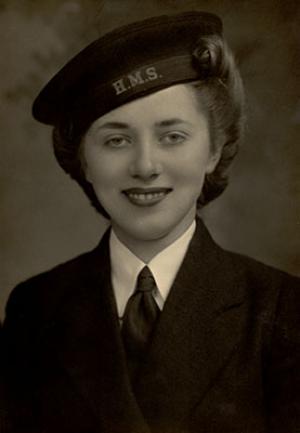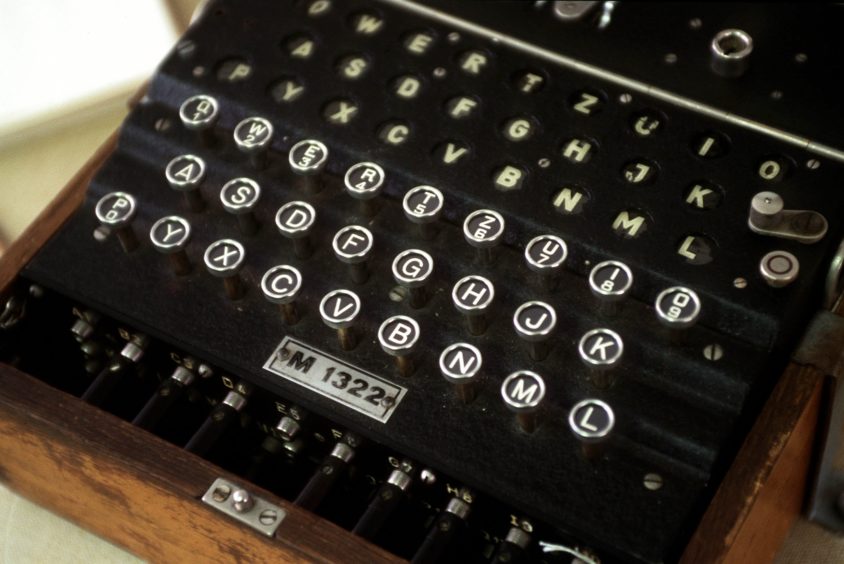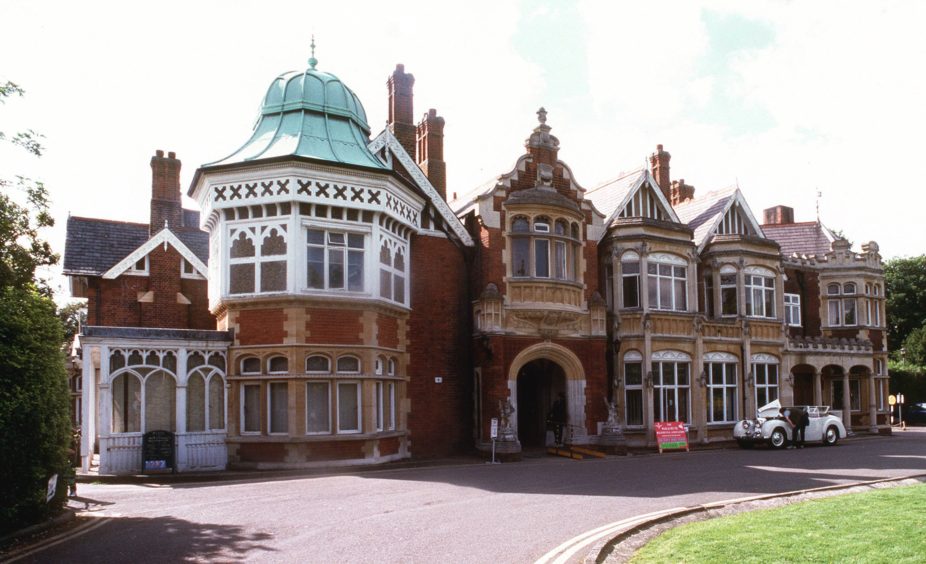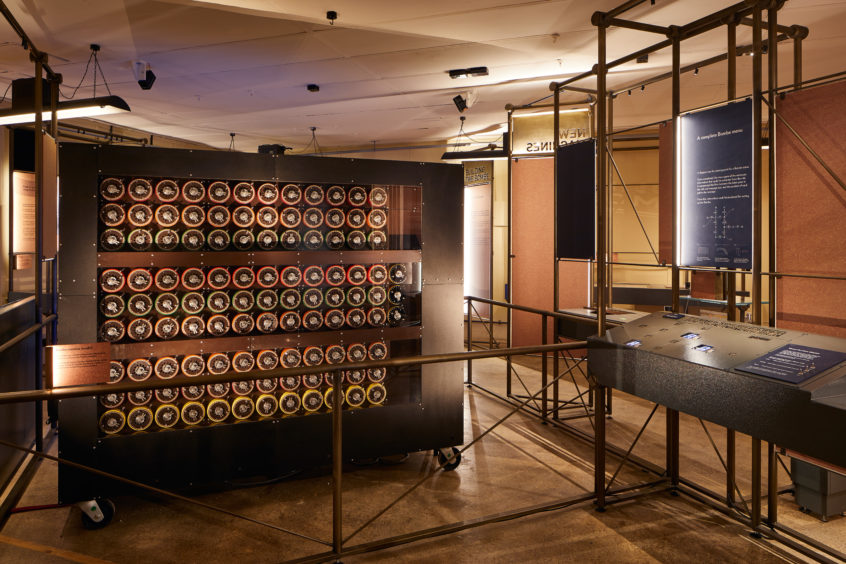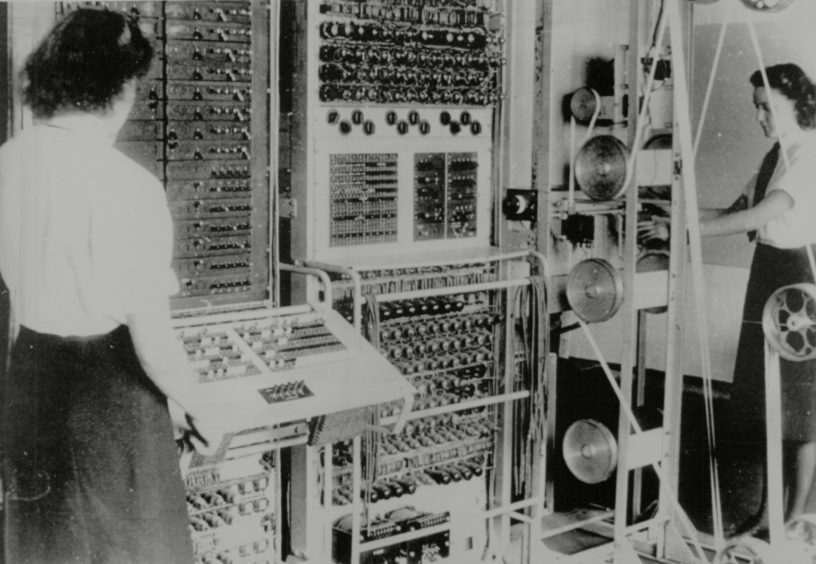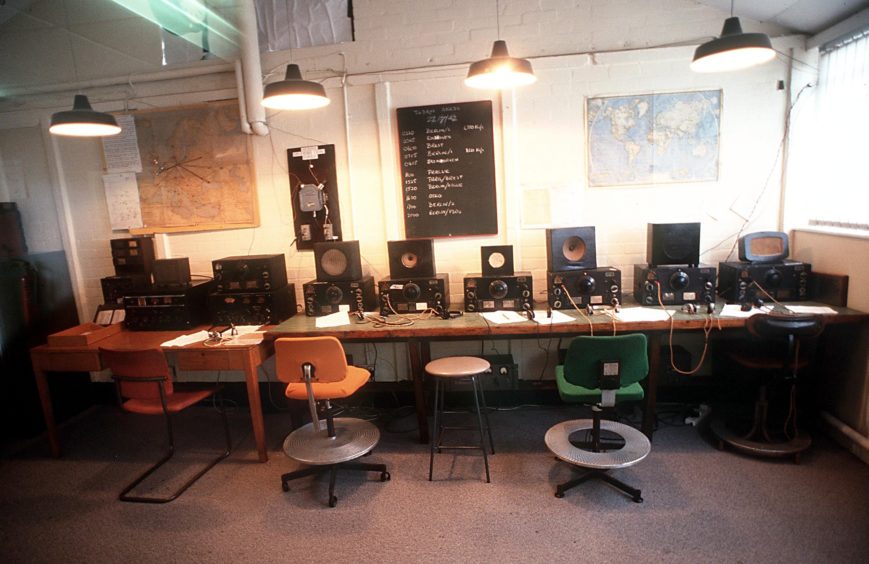They were a group of people who worked in a secretive world of encryption, deciphering crucial enemy codes throughout the Second World War.
And although we are familiar now with the vital contribution which the men and women at Bletchley Park made towards the Allies’ victory 75 years ago, these disparate individuals took their duties and responsibilities very seriously.
Jean Valentine, who was born in Perth in 1924, was among the youngest of the recruits who joined the cause, and eventually ended up in the Far East, while dedicating herself to being part of the eventual surrender of the Japanese in August 1945.
Her story remained untold for decades, yet the Scottish woman, who was just four feet 10 inches, but was determined to serve her country, was fascinated by puzzles and riddles…..all of which led to her joining the people who thrived in and around Alan Turing’s pioneering Enigma machines, which were a significant factor in the Allied success.
In 1943, the youngster joined the Women’s Royal Naval Service (WRNS) in what she described as “a fit of pique“ because her application to join the Women’s Auxiliary Air Force (WAAF) had been turned down.
But thereafter, despite having never previously been out of Scotland, she was sent down to Bletchley Park to work on the Bombe, the famous Enigma decoding machine.
It was only once she was there that the authorities realised the one-ton machine was so large that Jean couldn’t reach the top row of rotors, so they were forced to build a small platform for her to allow her to operate it.
She suspected the reason she was chosen for this work was that, on her application form, she had written about her love of cryptic crosswords and lateral thinking.
These were exactly the sort of skills which the top brass felt would make their recruits ideal code breakers as well as mathematicians, linguists and chess players.
While still only 19, she was posted to Sri Lanka after being trained on Japanese codes and ciphers and her job was to help decipher the Japanese meteorological reports and teleprint the results to various fleet reconnaissance units in the Pacific.
This was where she met Clive Rooke, a Royal Navy seafire pilot, and the couple were subsequently married in Colombo.
After signing the Official Secrets Act, she never talked about her activities during the conflict – even to her parents – until the mid-1970s when the first of the books came out about the vital role of Bletchley Park during the conflict.
She subsequently recalled her experiences for the benefit of the Bletchley Park Oral History project which has chronicled a fascinating variety of wartime reminiscences.
Mrs Rooke recalled: “In London, we were interviewed and after a couple of weeks in Earls Court doing nothing but waiting for orders and dancing every afternoon and
evening in Hammersmith Palais, I found myself on the way to Middlesex to train as a goodness-knows-what since it appeared that the officers who had assigned me to this category didn’t seem to know what the ‘what’ was themselves.
“Their prime concern seemed to be the matter of my stature and it was a case of ‘Stand up Valentine, all right, sit down again’.
“In the event, I couldn’t reach the top of my Bombe, but since they had divulged this op ‘Top Secret’ to me, they had to make the best of it and so I was provided with
a small wooden platform on which to stand while I set up the machine.
“After learning how to use this monster, which, as we now understand it, was the
forerunner of the modern day computer, I was then dumped in the middle of Buckinghamshire at Bletchley Park and mostly at one of the outstations, Adstock.
“It was there that we played our small part in breaking the German codes and we felt very proud and privileged to do so.
“As Winston Churchill put it, we were: ‘The geese that laid the golden egg and never cackled’.
“I cannot speak for anyone else who was there, but I know I didn’t breathe a word until after the first Codebreaker books were on sale some 30 years on.”
Mrs Rooke, who died last June, aged 94, started to attend the veterans’ reunions in the 1990s and was asked if she would become one of the volunteer guides to show the ever-increasing numbers of visitors around the park.
For many years, right up until her late 80s, she guided hundreds of tours comprising up to 35 people at a time and was always intelligent, engaging company.
She always spent a little extra time on every assignment at the rebuild of the Bombe, where visitors were offered the opportunity to gain first-hand knowledge and have the chance to ask questions of someone who actually operated the machine during the war.
In October 2009, the then Foreign Secretary David Miliband presented her and a number of other veterans with a special medal from Government Communications Headquarters, in recognition of their wartime service.
Then, two years later, the octogenarian had the honour of demonstrating the Bombe to The Queen and Duke of Edinburgh at a special ceremony to unveil the new memorial to the wartime code breakers.
She recalled: “After a very fulfilled and happy time, there was an order made to some of us to go overseas which, since I was still only 19, I could appeal against.
“However, my feeling was that if that was where we were wanted, then it was my job to go although I was somewhat loath to leave my present location, work and friends.
”So, we went back to Bletchley Park for a course on Japanese codes and ciphers which was altogether a different kettle of fish.
“This time, we were living in Woburn Abbey, a grand old pile, if at this time shorn of all its fancy trappings and pictures.
“This was February and it was as cold as charity. The bedrooms had double sets of heavy doors, one of them green baize, but nothing kept out the all-pervading chill.
“Then it was back to London for a week on Chelsea Embankment in Crosby Hall – the house of Thomas Becket. Next, we were travelling on a train to Greenock and heading off to Colombo on the SS Strathmore.
“There were nine of us in a single cabin just in case you have the impression we were
being spoiled.
“A month later, in one of the first convoys through the Mediterranean,
we docked in Bombay, where we hung about for a week on the Dunera, which had been damaged in a raid on the Bombay docks and was not seaworthy.
”The last leg of the journey was in a battered old boat called the City of London,
which had been condemned pre-war and pressed back into service.
“The cockroaches were the size of small mice – honestly!
“From there, it was Colombo at last and back to watch-keeping in an office which housed several officers who were trained either in meteorology or who had done a crash course in Japanese, four Met wrens and me.
“Our job was to receive the signals from the wireless room specifically connected to Met reports in the Pacific, do our best to make sense of them, then teleprint the results to various Fleet Reconnaissance units in Hawaii, Melbourne and the Eastern Fleet.
“In the following 18 months, we worked hard, played hard and I think we largely enjoyed our lives.
“During this time, I met only one former pupil of Perth Academy, Alex Torrance, who was stationed at the same Fleet Air Arm base as Clive, who became my husband.
“In fact, when Alex left his aircraft in somewhat of a hurry, Clive drove him to the rest camp at a hill station called Diyatalawa. He subsequently attended our wedding in the Scots Kirk and afterwards at the Galle Face Hotel in Colombo.
“After spending the post-war years in Burma and Bombay, we settled down in the UK and brought up a daughter and son.
“They spent very happy holidays every year with my parents in Perth, who in their turn would come to St Albans, Brentwood, Chigwell and High Wycombe to spend Christmas with us.”
In recent years, Google has maintained a close relationship with Bletchley Park because of Alan Turing’s work on algorithms and early computer science.
It raised the funds to buy the Turing Papers when they came up for sale, allowing them to remain at their rightful home at Bletchley Park.
And Mrs Rooke never regretted becoming involved in that mysterious world.
She said: “How wise the WAAF were and how stupid I was to think my little height and leg reach would have been of any use in driving anything but a saloon car!”
She may have been diminutive in inches, but she made a big impression.
Further information is available here.
